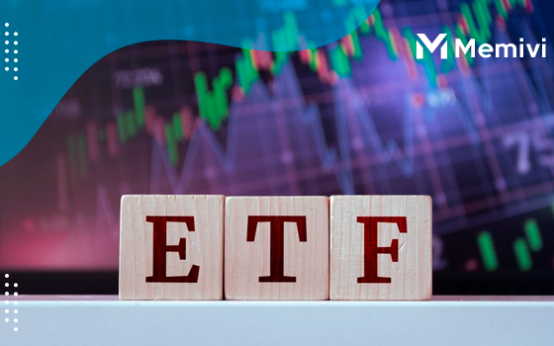
One way to get started is to invest in a mid-cap ETF. Mid-cap companies are those with market capitalizations between $2 billion and $10 billion, and they offer investors the perfect balance of risk and reward. In this post, we’ll take a closer look at the top mid-cap ETFs on the market today. We’ll explore what makes them great, what their returns have been like, and how they can help you diversify and grow your portfolio.
By the end of this guide, you’ll have a better understanding of why mid-cap ETFs are a great investment option, and you’ll be equipped with the knowledge you need to make informed investment decisions.
Understanding the mid-cap segment of the market
Understanding the mid-cap segment of the market is essential for investors looking to diversify and grow their portfolios. Mid-cap stocks, as the name suggests, fall between large-cap and small-cap stocks in terms of market capitalization.
While large-cap stocks are typically well-established and stable companies, and small-cap stocks often represent emerging or high-growth companies, mid-cap stocks offer a unique combination of growth potential and relative stability.
Mid-cap companies are generally defined as those with market capitalizations ranging from $2 billion to $10 billion, although these ranges may vary depending on the source. They can be found across various industries and sectors, providing investors with ample opportunities for diversification.
By adding mid-cap stocks to your portfolio, you can potentially benefit from the growth potential of smaller companies while reducing some of the volatility associated with small-cap stocks.
One advantage of investing in mid-cap stocks is their ability to adapt and grow. These companies have usually passed the initial stage of business development and have the potential to expand their market reach. They may have established products or services, a loyal customer base, and a solid track record of revenue and earnings growth.
This combination of stability and growth potential can be attractive to investors seeking a balanced approach. Moreover, mid-cap stocks often fly under the radar of many institutional investors, who tend to focus on large-cap stocks. This can create opportunities for individual investors to uncover undervalued gems and benefit from their growth trajectory. Additionally, investing in mid-cap ETFs can provide a convenient way to gain exposure to a diversified basket of mid-cap stocks, reducing the risk associated with investing in individual companies.
The Top Mid-cap ETFs
When it comes to diversifying and growing your investment portfolio, mid-cap ETFs can play a crucial role. These exchange-traded funds offer a unique balance between the stability of large-cap stocks and the potential for growth seen in small-cap stocks. By investing in mid-cap ETFs, you can tap into the growth potential of mid-sized companies while reducing the risk associated with investing in individual stocks.
One top mid-cap ETF to consider is the iShares Russell Mid-Cap ETF (IWR). This ETF tracks the performance of the Russell Midcap Index, which includes 800 mid-cap U.S. stocks. With a diverse range of sectors represented, including technology, healthcare, consumer goods, and financial services, IWR provides broad exposure to the mid-cap market.
Another notable mid-cap ETF is the Vanguard Mid-Cap ETF (VO). This ETF seeks to track the performance of the CRSP US Mid Cap Index, which encompasses approximately 350 mid-cap stocks. With a low expense ratio and a focus on well-established mid-cap companies, VO offers investors a cost-effective way to participate in the mid-cap segment of the market.
For investors looking for a more growth-oriented mid-cap ETF, the iShares S&P Mid-Cap 400 Growth ETF (IJK) is worth considering. This ETF aims to track the performance of the S&P MidCap 400 Growth Index, which includes mid-cap stocks with strong growth potential. With a focus on sectors such as technology, healthcare, and consumer discretionary, IJK offers exposure to companies that are poised for significant growth.
Lastly, the Schwab U.S. Mid-Cap ETF (SCHM) provides investors with a low-cost option for gaining exposure to mid-cap stocks. This ETF seeks to track the performance of the Dow Jones U.S. Mid-Cap Total Stock Market Index, which covers approximately 450 mid-cap stocks. SCHM offers a diversified portfolio with a focus on sectors such as industrials, healthcare, and financials.
When considering which mid-cap ETFs to include in your portfolio, it is important to assess your investment goals, risk tolerance, and overall portfolio diversification. By carefully selecting top mid-cap ETFs that align with your investment strategy, you can enhance diversification and potentially achieve attractive long-term growth within your portfolio.
Factors to consider when choosing mid-cap ETFs

When it comes to investing in mid-cap ETFs, there are several factors you should consider to make informed decisions that align with your investment goals and risk tolerance. These factors can help you identify the most suitable mid-cap ETFs that can diversify and grow your portfolio.
- Market Capitalization: Mid-cap ETFs typically focus on companies with a market capitalization between large-cap and small-cap stocks. It’s important to evaluate the market capitalization range of the ETFs you are considering to ensure they align with your desired exposure to mid-cap stocks.
- Sector Allocation: Different mid-cap ETFs may have varying sector allocations. Assessing the sector allocation of an ETF is crucial as it helps you understand the level of diversification within the fund. Look for a mid-cap ETF that offers a well-balanced allocation across sectors based on your risk appetite and sector preferences.
- Expense Ratio: The expense ratio represents the annual fees charged by the ETF, which can impact your investment returns. Compare expense ratios across different mid-cap ETFs to find a fund that offers competitive pricing without compromising on quality or performance.
- Liquidity: Liquidity refers to the ease of buying and selling shares of an ETF. It’s essential to choose mid-cap ETFs with sufficient average daily trading volume to ensure you can enter or exit positions without facing significant price fluctuations or difficulty in executing trades.
- Performance and Historical Returns: Evaluate the historical performance of mid-cap ETFs to gauge their potential for growth and consistency. Consider factors such as long-term returns, volatility, and benchmark comparisons to assess the fund’s track record.
- Fund Management and Strategy: Research the fund manager’s expertise and investment strategy. Understanding how the ETF is managed and whether it aligns with your investment philosophy is crucial. Look for a mid-cap ETF with a proven track record and a transparent investment approach.
By carefully considering these factors, you can make well-informed decisions when choosing mid-cap ETFs that align with your investment objectives. Remember to review and monitor your portfolio regularly to ensure it remains diversified and aligned with your long-term financial goals.
Final Thoughts
By incorporating mid-cap ETFs into your investment strategy, you can potentially benefit from the growth potential of mid-sized companies while minimizing some of the risks associated with investing in individual stocks. Remember, diversification is the key to managing risk and maximizing returns in the long run. We hope you found our guide to uncovering the top mid-cap ETFs helpful in diversifying and growing your portfolio. Investing in mid-cap companies can be a smart strategy for achieving long-term growth and spreading risk.


 Inheriting a Windfall: Essential Steps to Secure Your Financial Future <p class='sec-title' style='line-height: normal; font-weight: normal;font-size: 16px !important; text-align: left;margin-top: 8px;margin-bottom: 0px !important;'> It's important to remember that the way you handle this money can have a significant impact on your financial future. </p>
Inheriting a Windfall: Essential Steps to Secure Your Financial Future <p class='sec-title' style='line-height: normal; font-weight: normal;font-size: 16px !important; text-align: left;margin-top: 8px;margin-bottom: 0px !important;'> It's important to remember that the way you handle this money can have a significant impact on your financial future. </p>  7 Best Bitcoin ETFs <p class='sec-title' style='line-height: normal; font-weight: normal;font-size: 16px !important; text-align: left;margin-top: 8px;margin-bottom: 0px !important;'> With the rise of Bitcoin and other cryptocurrencies, investors are looking for ways to invest in this new and exciting asset class. </p>
7 Best Bitcoin ETFs <p class='sec-title' style='line-height: normal; font-weight: normal;font-size: 16px !important; text-align: left;margin-top: 8px;margin-bottom: 0px !important;'> With the rise of Bitcoin and other cryptocurrencies, investors are looking for ways to invest in this new and exciting asset class. </p>  Navigating Stability: Discover the Top 10 Long-Term Bond ETFs <p class='sec-title' style='line-height: normal; font-weight: normal;font-size: 16px !important; text-align: left;margin-top: 8px;margin-bottom: 0px !important;'> Investing in long-term bond ETFs can be an excellent way to add stability to your investment portfolio. Learn more. </p>
Navigating Stability: Discover the Top 10 Long-Term Bond ETFs <p class='sec-title' style='line-height: normal; font-weight: normal;font-size: 16px !important; text-align: left;margin-top: 8px;margin-bottom: 0px !important;'> Investing in long-term bond ETFs can be an excellent way to add stability to your investment portfolio. Learn more. </p>